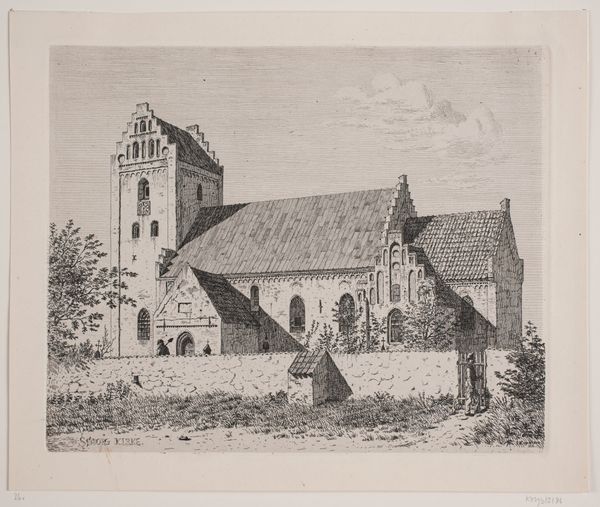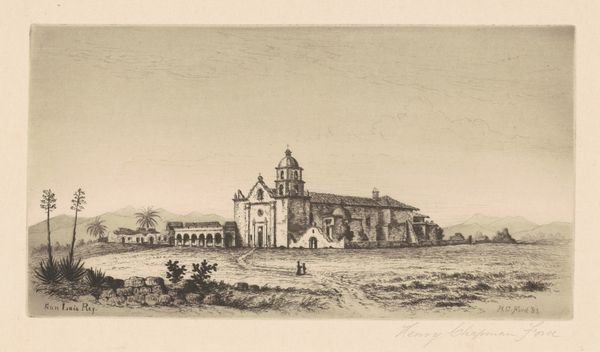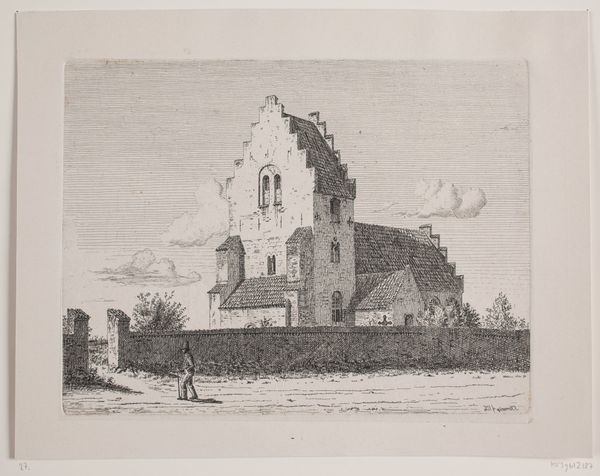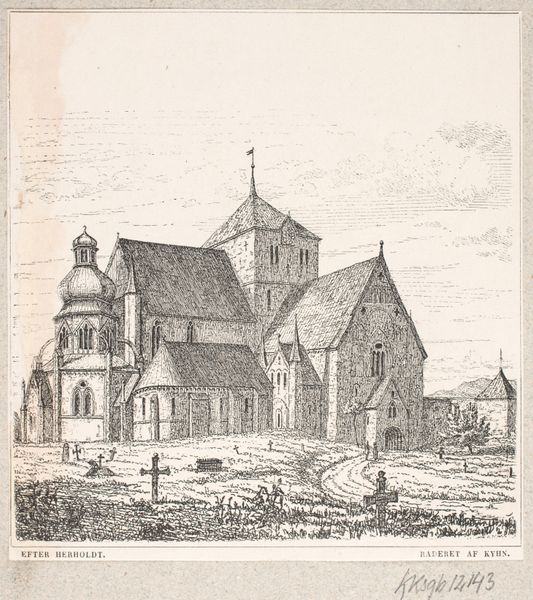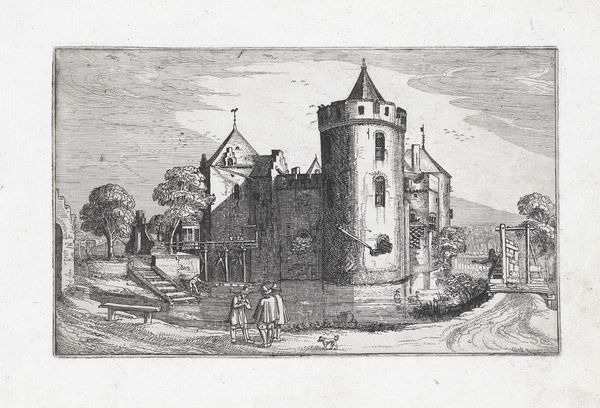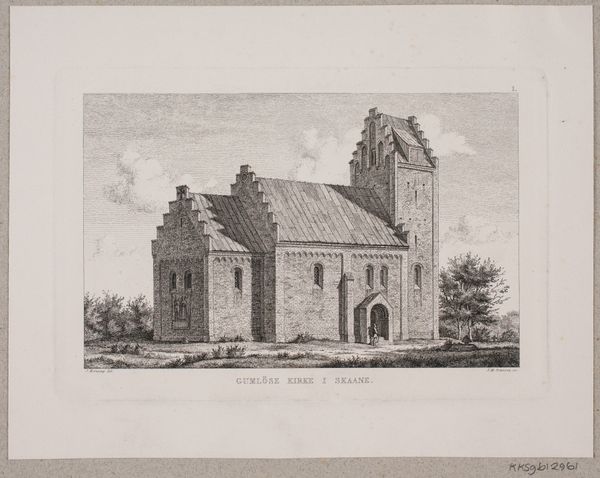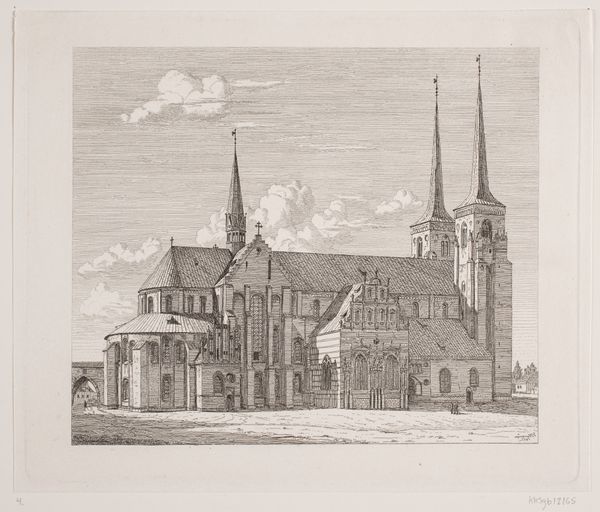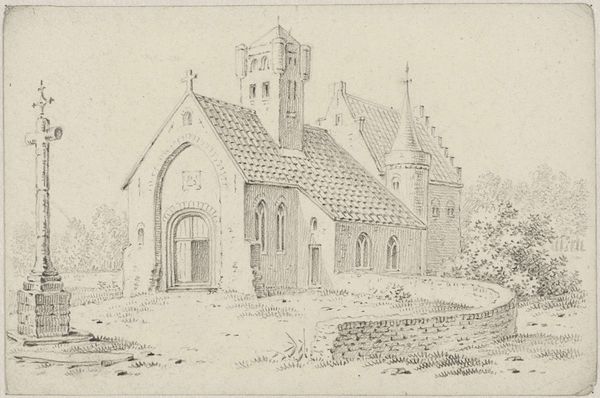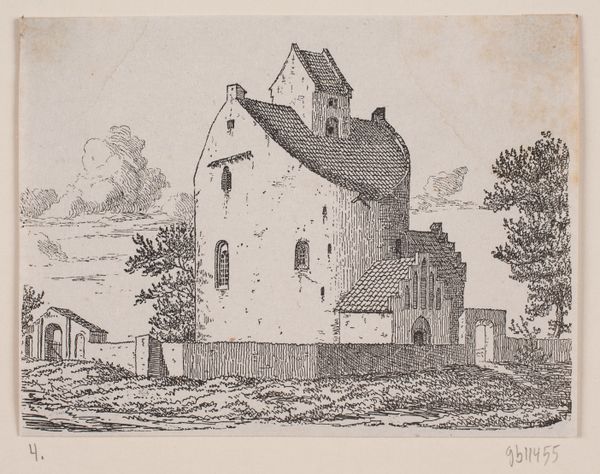
print, etching, architecture
# print
#
etching
#
pencil sketch
#
landscape
#
architecture
#
realism
Dimensions: 101 mm (height) x 142 mm (width) (bladmaal)
Curator: This is "Viborg Domkirke," an etching by Christen Dalsgaard, created in 1856. It depicts the Viborg Cathedral in Denmark. Editor: Immediately, I'm struck by the graphic quality of the image. The sharp lines create a striking contrast, almost like a woodcut. The interplay of light and shadow across the cathedral's facade is masterfully rendered. Curator: The process of etching itself is significant here. The act of incising the lines into the metal plate, then applying the ink and transferring it to paper. Dalsgaard was engaging with a well-established, but evolving, method of reproduction that enabled the dissemination of architectural imagery. It reflects the accessibility of art for the rising middle class in the mid-19th century. Editor: I agree. Focusing on the composition, notice how Dalsgaard utilizes strong horizontals and verticals to emphasize the cathedral’s solidity and permanence. The careful placement of the towers creates a balanced yet dynamic effect, drawing the eye across the image. It's an assertive arrangement. Curator: Furthermore, consider the social context. Viborg Cathedral was and remains a vital center for the community. Dalsgaard’s work situates the Cathedral within a specific time of cultural transition, it underscores how religious sites functioned as symbols of social and political identity. The architecture represents a visual declaration of place in the public sphere. Editor: Right. The lines and structure lead you up, heavenward, towards its religious intent. Curator: In examining Dalsgaard's process, and indeed the cathedral itself, we uncover much more than a picturesque building, but an examination of how culture and structure influence each other. Editor: And through his use of form, Dalsgaard offers a window into not just the cathedral, but its timeless and enduring significance.
Comments
No comments
Be the first to comment and join the conversation on the ultimate creative platform.
